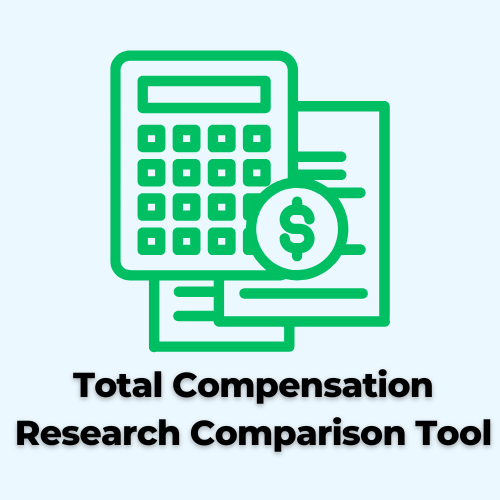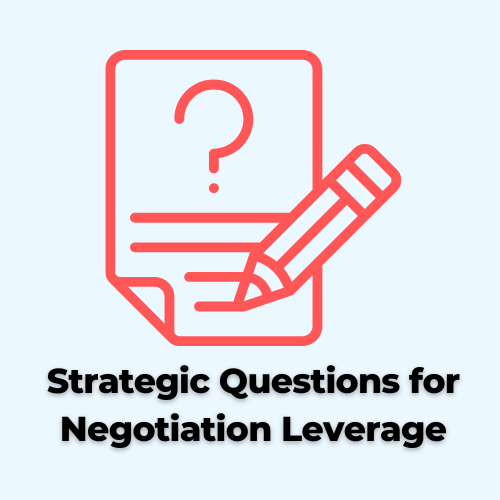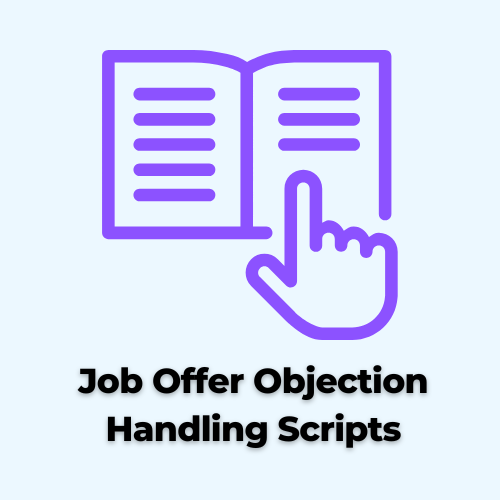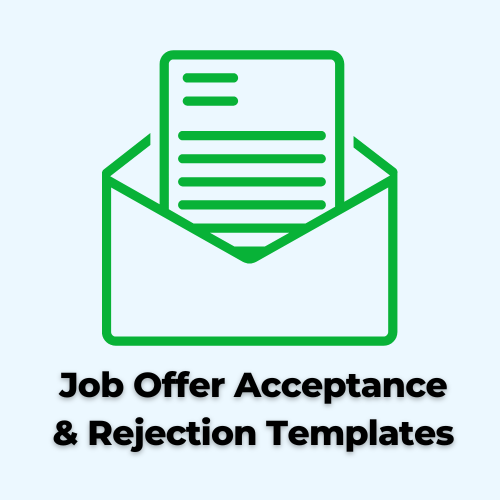Amazon Salary Negotiation - How To Negotiate an Amazon Job Offer
Negotiating a job offer for a fast-growing tech company like Amazon can be intimidating, but it’s essential if you want to receive better compensation. In fact, 100% of our clients received more compensation when they negotiated their Amazon job offer using The Salary Negotiator’s tried-and-true strategy.
Regardless, many people assume the salary negotiation will be difficult since Amazon lists “Frugality” as one of their leadership principles, yet “Having Backbone” is also a leadership principle, so negotiating your Amazon job offer can be a great opportunity to display this leadership quality—especially if you know how to negotiate your Amazon job offer effectively. While Amazon may not have the competitive benefits and perks that other FAANG companies offer, they are a leader in offering competitive pay to software engineers, data scientists, technical product managers, solution architects, and many business-based roles, which means they may be more willing to negotiate in that area.
In this blog, we break down our strategy so you can negotiate your Amazon job offer with confidence and ensure you don’t leave any compensation on the table.
For those who prefer learning by video, we've also created an Amazon salary negotiation video guide.
Otherwise, this article provides the same Amazon salary negotiation tips and strategies as the video.
Want to Negotiate Your Amazon Offer? Get offer-specific guidance from a Amazon Salary Negotiation Coach. We help career professionals negotiate competitive job offers.
Or leverage our Salary Negotiation Courses and Salary Negotiation Templates.
 Job Offer Negotiation Course
Job Offer Negotiation Course
- Get our job offer negotiation strategies, templates, scripts, and guidance.
- Access our step-by-step lessons, compensation research guides, and tools.
- Access Now
 Raise Negotiation Course
Raise Negotiation Course
- Get our raise negotiation strategies, templates, scripts, and guidance.
- Access our step-by-step lessons, compensation research guides, and tools.
- Access Now
Understanding Compensation Components in an Amazon Job Offer
Amazon’s salaries are competitive with other tech companies, but their compensation and benefits differ slightly compared to other FAANG companies. Understanding those components before you start negotiating is key to setting yourself up for success. Why? Because you’ll want to negotiate as many components of your package as possible—not just the salary at Amazon. Additionally, understanding Amazon compensation structure will help you calculate your total compensation, which is valuable information to know before you jump into the salary negotiation process.
In addition to a base salary, Amazon provides an initial equity grant, a Amazon sign on bonus in year one and year two, and many other valuable benefits. Note that Amazon does not provide a yearly performance bonus which is a common perk in most other tech companies. Here’s an example of what the total compensation for an Amazon Senior Software Engineer salary (Level 6 - L6) may look like in the initial offer:
Amazon Software Engineer Salary
Amazon Base Salary
The first component in your Amazon or AWS job offer is your base salary, or the guaranteed fixed pay you receive for the work you do. Your base salary will always be the same unless you get promoted, see a merit increase, or your role changes. Amazon used to cap their base salaries at $160,000 per year but they did increase the base salary cap to $350,000 to ensure they can be competitive compared to other tech companies.
At Amazon, there’s a specific salary band for each role type and level with a set minimum and maximum amount. For example, the Amazon technical program manager salary would differ from the range for a Amazon financial analyst salary or a product manager Amazon salary.
This is also true across divisions within Amazon, and you will see a higher Amazon compensation structure if you receive a job offer in AWS. For example, a Amazon Senior Software Engineer salary would have a different base salary range than a AWS Senior Data Scientist salary or AWS Senior Solution Architect salary at the same level.
The base salary you receive in your initial offer will unlikely be at the top end of the pay band, and while the base salary is usually the hardest component to get Amazon to adjust, it’s still important to negotiate it higher.
Amazon Initial Equity Package
Equity compensation is a central part of Amazon's total comp philosophy, and it’s fully negotiable. It’s actually where our clients have made some of the largest improvements in their compensation when we guided them through their salary negotiation with Amazon.
At Amazon, new employees will receive an initial equity grant in their job offers, which comes in the form of restricted stock units (RSUs). These RSUs represent actual ownership of stock (i.e., you will receive shares of AMZN stock) that will be transferred to you when the stock vest. However, your RSUs at Amazon will have a much different vesting schedule compared to most companies with equity in their offers.
Amazon RSUs have a four-year Amazon RSU vesting schedule with 5% vesting on your first anniversary, 15% on your second anniversary, and 20% every 6 months thereafter (40% in year three and 40% in year four) until your fourth anniversary. This is a different vesting schedule compared to Apple, Meta, Google, Microsoft, and other large tech companies who offer equal percentages of your equity vesting each year.
Amazon Vesting Schedule
| Company | Vesting Period | Year 1 | Year 2 | Year 3 | Year 4 |
|---|---|---|---|---|---|
| Amazon | 4 years (staggered) | 5% | 15% | 40% | 40% |
However, Amazon does fill this gap with guaranteed compensation in the form of a sign-on bonus in years one and two, which we’ll cover in the next section.
While Amazon’s RSUs can be an extremely valuable form of compensation, if you leave Amazon before the stock vests per the Amazon RSU vesting schedule, you’ll forego that equity. This is a decision that gets harder when you have 80% of the equity that won’t vest until years three and four at Amazon.
Amazon Sign-On Bonus
Amazon has a peculiar approach to its Amazon sign-on bonuses. Most companies offer sign-on bonuses once—as an incentive to join and cover any lost bonuses or unvested equity that you may give up at your current company. But at Amazon, employees receive a Amazon signing bonus in both years one and year two. This acts as a bridge to elevate your total compensation in the first two years until you start to receive the bulk of your equity in years three and four.
Amazon’s sign on bonuses are either paid as a lump sum payment at the beginning of each of your first two years if less than $25,000, or they will be paid out monthly with your base salary if they exceed $25,000—which many do. There are no payback conditions associated with the Amazon signing bonus if it’s paid out evenly over each year because you “earn” it monthly but it will be taxed like your base salary.
The good news is that your Amazon hiring bonus is fully negotiable and it’s the component that Amazon is usually the most flexible on during the salary negotiation.
Amazon Yearly Merit Increase
As mentioned earlier, Amazon does not offer a yearly bonus that reflects both personal and company performance. Instead, they offer a merit increase based on your performance rating each year. These merit increases were relatively large in 2022 to account for inflation but historically have been relatively low. Merit increases typically take effect in April each year at Amazon.
Your merit increases will be a percentage of your base salary at Amazon, making it even more important to negotiate your base salary before you start the role. Because of this and because it’s usually just a yearly adjustment to keep up with inflation, we don’t include it in our total compensation calculation.
Amazon Annual Stock Refresh
Amazon offers additional equity (more stock) on an annual basis to most employees. This is similar to the merit increase and is based on your performance rating. It’s usually used as a tool to bridge your total compensation after your first two years at Amazon if the stock value is lower than expected. However, the same can hold true if your current equity has appreciated, which can increase your total compensation and may cause you to receive a lower annual stock refresh at Amazon.
While this is an important component of your total compensation, just like the merit component, we don’t include it in our total compensation calculation because it’s tied to your performance and total compensation in future years, making it hard to factor into your total compensation and compare across multiple offers.
Benefits And Perks At Amazon
Compared to most companies, Amazon offers some great benefits and perks to its employees, but they do lack the perks you may see at rival FAANG companies. They offer a generous health insurance plan among other standard benefits, but there’s a non-competitive 401k company match (only 2%), no discounted employee stock purchase plan (ESPP), and not even a free Amazon Prime membership. You do get a 10% discount on Amazon Prime purchases of up to $1,000 per year ($100 value) but this falls significantly below the product discounts offered by Apple and Microsoft.
However, while Amazon does take a perk hit compared to rival FAANG companies, they do provide very competitive pay and are known to elevate employees’ careers just by having “Amazon” on their resumes.
Five Key Steps to Negotiate an Amazon Job Offer
Negotiating an Amazon job offer requires a slightly different approach than how we would negotiate a Meta job offer or negotiate an Apple job offer, so it’s important to understand how to navigate the process before you begin negotiating.
Most importantly: wait to start the negotiation until you have an offer in hand. Amazon is known to pry about your salary expectations and you don’t want to jeopardize your chances of receiving a strong job offer by negotiating too early with Amazon. You’ll always have more leverage once the hiring team has selected you as the ideal candidate for the role and has shared an offer.
Below, we identify five key steps that will help you navigate your Amazon and AWS salary negotiation, based on our experience working with hundreds of clients on their salary negotiations. While these are the key steps to a Amazon salary negotiation, we strongly recommend you work with a Amazon Salary Negotiation Coach to ensure success in your Amazon offer negotiation by getting all of our strategies.
1) Understand The Components Of Your Amazon Job Offer
As we mentioned above, understanding the total compensation in your Amazon job offer is the first step before attempting to negotiate your salary. But since we’ve already done that above, you can check this off the list. But if you have specific questions about the components of your job offer, you can always reach out to our team.

- Understand Total Compensation – Use our tool to break down and calculate the compensation in your job offer.
- Research & Compare Offers – Organize your compensation research and determine the right counter amount.
- Get Here
2) Complete Due Diligence On Your Amazon Job Offer By Asking The Right Questions
If there’s one thing you take away from this article, it’s this: make sure you understand your offer before you start negotiating and especially before accepting. Asking smart questions not only shows that you value the offer and their time, but it allows you to gather additional data that is key for crafting an effective Amazon counteroffer and ultimately improving your compensation. Even if you think you already know the answers, ask them anyway! It never hurts to confirm and you can easily use our list of Strategic Questions to Build Negotiation Leverage if you need help finding the right questions to ask about your Amazon offer letter.

- Build Negotiation Leverage – Ask the right questions to strengthen your negotiation before sending a counter.
- Email & Phone Scripts – Get our list of questions to ask and what to say if the recruiter wants to chat through them.
- Get Here
While it’s normal to ask for more time to process the offer, our clients have had more success negotiating Amazon job offers when they start this step right after they receive the initial offer. This way, it shows you’re actively interested in understanding and pursuing the role.
3) Research The Compensation Ranges To Identify What Your Compensation Should Look Like
It goes without saying that tech companies are known for using data to make decisions—and Amazon is no exception. That’s why it’s important to gather compensation data to understand the role’s pay range, the strength of your offer, and how much you should ask for based on your specific role and its location.
Payscale, Glassdoor, and Comparably can provide helpful data on salaries and other compensation components, but keep in mind that these publicly recorded pay ranges may not accurately reflect all compensation components, especially given changes in compensation from year to year. Our job offer negotiation course will walk you through an actual Amazon example on how to research compensation or you can download our Total Compensation Research Comparison Tool to help you with your Amazon compensation research.

- Understand Total Compensation – Use our tool to break down and calculate the compensation in your job offer.
- Research & Compare Offers – Organize your compensation research and determine the right counter amount.
- Get Here
A general rule is to push for the mid-to-top-end of the total compensation range—regardless of your experience or background.
4) Send A Counteroffer To The Amazon Recruiter
Once you’ve completed prepping for the negotiation (the first three steps), you’re ready to send over a salary negotiation counter. This is an exciting step where you get to advocate for yourself and show why you’re an asset to the team.
In this step, you’ll respectfully present your Amazon counteroffer (like our drafts here) to the recruiter by referencing your research and articulating how the benefits differ from other companies and/or your current role. This can be done over the phone, but we strongly recommend doing this via email so you have everything in writing. This also ensures that the recruiter accurately shares your Amazon counteroffer with the hiring team. Be firm, but remember to always be professional and courteous. Even though you received an offer, you haven’t signed it yet, and you want to set a gracious example of how you’d act as an Amazon employee.

- Proven Counteroffer Templates – Built from hundreds of successful job offer negotiations.
- Negotiate with Confidence – Remove the guesswork with our professionally crafted counteroffers.
- Get Here
5) Handle Any Objections From The Recruiter And Accept The Role Knowing You Achieved The Best Offer
Sometimes it only takes one counteroffer with Amazon and the recruiter will respond with an updated offer. If that’s the case, congratulations! Usually though, the recruiter will come back to you with reasons on why the hiring team cannot make any adjustments. If that happens, it’s important to see their “NO” as an objection you need to overcome instead of a “NO” that you can’t push back on.
If they do say no to your Amazon counteroffer, respond by respectfully acknowledging their constraints, but reiterating your ask and your desire for them to share your thoughts with the team even if they say that their team will just say no (just like this).

- Overcome Recruiter Pushback – Proven scripts to handle pushback and keep your salary negotiation on track.
- Communicate Effectively – Use expert responses to get recruiters to advocate for you with the compensation team.
- Get Here
Use this approach regardless of the recruiter’s reasoning. You may have to handle a few objections but once they agree to take it back to their team, they should come back with a better offer.
Once you receive an updated offer that fits your personal needs and matches the pay bands you researched, you should be ready to send an acceptance email to the Amazon recruiter. Congratulations on navigating this milestone!

- Accept or Decline – Expert crafted job offer acceptance email and rejection email templates to share your decision.
- Professional & Genuine Tone – These help you communicate in a professional manner regardless of what you decide.
- Get Here
Negotiation Mistakes to Avoid During your Amazon Salary Negotiation
As you follow the above five steps, there are several salary negotiation mistakes you should take care to avoid in order to get a competitive job offer with Amazon.
Avoid Sharing Salary Expectations Before You Get A Job Offer At Amazon
In our experience negotiating Amazon job offers, their recruiters will work hard to find out your salary expectations. But sharing your salary expectations can work against you in receiving a fair offer, so try to avoid that by using language like this. Amazon recruiters might tell you that if they know your salary expectations then they can try to find the best deal for both you and their team. It sounds like a logical request, but remember that they’re working for Amazon, not you.
For example, if you share a lower compensation than what they could offer, they are more likely to offer you that low compensation. Alternatively, if you name a number higher than what they can offer, there is a chance that they could become disinterested and decide to go with a different candidate. Further, it doesn’t make sense to discuss compensation before you learn more about the specific role and the benefits Amazon can offer you.

- Salary Expectation Responses – Scripts to overcome recruiter salary expectation discussions and pre offer calls.
- Avoid Lowballing Yourself – These call scripts and email templates will help you get a competitive offer.
- Get Here
Don't Be Afraid To Negotiate Amazon Salary
Many people are nervous or overwhelmed about negotiating a job offer with Amazon out of fear of losing the offer. However, we’ve helped facilitate hundreds of successful Amazon salary negotiations, and we’ve never seen Amazon pull a job offer because a candidate tried to negotiate. It's generally expected, regardless of the level role at Amazon—whether it’s an individual contributor (e.g., Amazon software engineer salary), Amazon engineering manager salary, Amazon director salary, or an Amazon VP salary—you should negotiate your Amazon salary. Don’t let salary negotiation myths or hearsay talk you out of advocating for what you deserve.
Be Realistic By Doing Your Research
Amazon pays extremely well but it’s important to be realistic and only push for compensation that the Amazon team can realistically provide. Understanding your total compensation at Amazon and researching what Amazon pays for your specific role will help you know what compensation is appropriate.
Most Common Questions About Amazon Offer Negotiation
Can an Amazon offer be negotiated?
Yes, it just takes the right salary negotiation strategies to get Amazon to adjust their offer package. Negotiating an Amazon salary is not only possible, but it’s recommended by our salary negotiation coaching team. If you approach the Amazon salary negotiation with the right strategies then you should receive a more competitive job offer before starting the new role.
Does Amazon let you negotiate salary?
Amazon recruiters use a lot of tactics to deter you from negotiating an Amazon offer, but they can be negotiated. You just need to overcome the Amazon recruiter pushback and have a solid negotiation strategy like ours to negotiate a Amazon salary.
How Long Does Amazon Take to Give an Offer?
Amazon does have their notorious hiring loop where you will meet with many interviewers and a bar raiser, but they are known among the big tech companies to have one of the faster hiring processes.
The Amazon offer letter process typically includes an initial phone screen followed by a hiring loop of multiple interviews. Once the Amazon hiring loop is wrapped up, they usually strive to provide a hiring decision relatively quickly after the hiring team meets to make a decision.
Does Amazon Give a Joining Bonus?
Amazon does offer joining bonuses which are usually referred to as Amazon sign-on bonuses for corporate roles and levels. The Amazon sign-on bonus is broken into one in year one and one in year two where they will be paid out monthly over those periods as we explained in the sections above. They are also very negotiable if you counter offer salary with Amazon.
Amazon Salary Negotiation Coaching & Tools
Increasing your Amazon compensation requires a deep understanding of the company’s compensation philosophy and the right salary negotiation strategy. Our expert Salary Negotiation Coaching will help you navigate the Amazon salary negotiation process and secure the top end of the pay band.
Or leverage our Salary Negotiation Courses and Salary Negotiation Scripts.
 Job Offer Negotiation Course
Job Offer Negotiation Course
- Get our job offer negotiation strategies, templates, scripts, and guidance.
- Access our step-by-step lessons, compensation research guides, and tools.
- Access Now
 Raise Negotiation Course
Raise Negotiation Course
- Get our raise negotiation strategies, templates, scripts, and guidance.
- Access our step-by-step lessons, compensation research guides, and tools.
- Access Now



